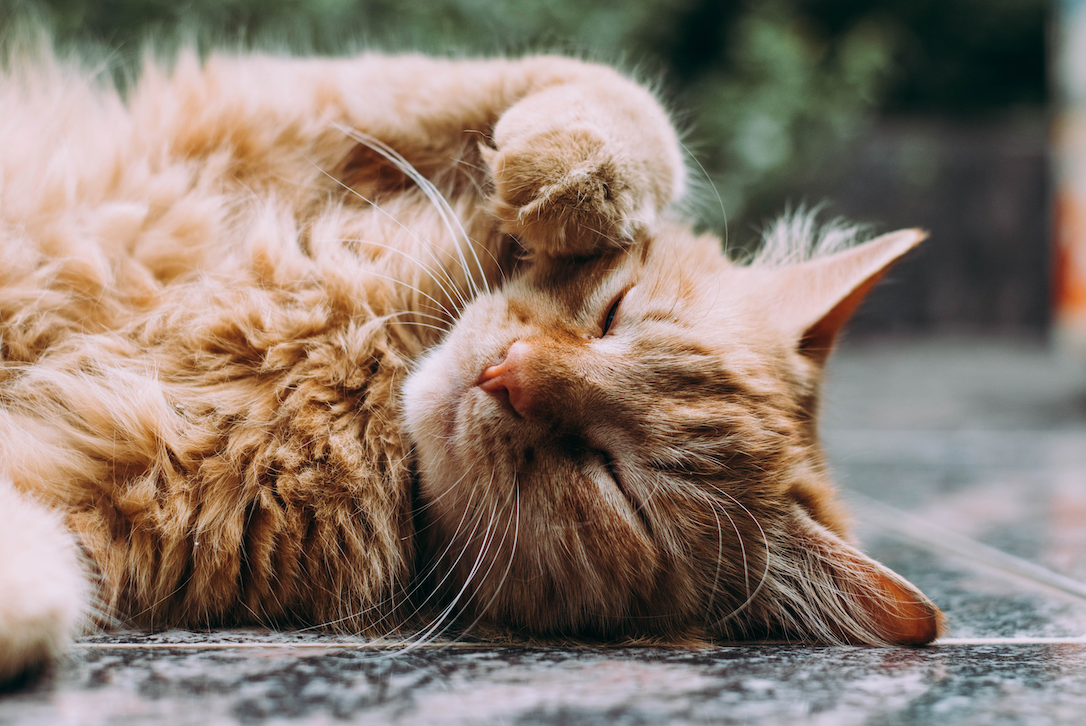Can cats get hot spots?
June 23, 2021

Published: June 2021 | Updated: July 2022
Hot spots are one of the most prevalent skin problems in cats, and they're especially troublesome during the summer. They appear out of nowhere, causing our cats pain, itching, and discomfort. Fortunately, when appropriately treated, they can be managed and even prevented.
Hot Spots On Cats
Hot spots, also known as acute moist dermatitis, are inflamed and bacterially infected patches of the skin. They usually start with an odor and a reddish region that resembles an insect bite. Unlike an insect bite, however, they quickly turn into an oozing, painful sore.
When skin is broken, a minor itch quickly becomes a significant medical problem. Our cats develop self-inflicted sores as a result of increased licking, scratching, and biting.
Our cats have a hard time resisting the spots, so they don't scab over. That would be difficult for us to do as humans. Consider that for a moment. Do you scratch it if you have an itch? What if your skin was itchy to the point of being excruciating not to scratch, and a little scratching gave you even the tiniest bit of relief?
That's why, if left untreated, hot spots on cats seldom go away on their own and can quickly grow into a serious problem.
What Do Cat Hot Spots Look Like?
You should consult your veterinarian if you have any concerns about your cat. In the early phases of hot spot growth, redness, edema, and hair loss are common. The head, limbs, and hips are the most common places to find them.
The optimum time to contact your veterinarian is when you observe a reddish area, but if your cat has a lengthy coat, this may be difficult to see. You will notice excessive scratching, itching, and/or licking, and you can investigate what your cat is nibbling on. To prevent lesions from occurring, call your veterinarian and have your cat treated promptly if you suspect a hot spot is developing.

What Causes Hot Spots On Cats?
Hot spots are generally triggered by scratching, licking, or chewing the reddish area aggressively, despite the fact that they seem to appear magically. Excessive attention to the area causes trauma, which leads to inflammation and bacterial infections.
Of course, this doesn't stop the skin from being irritated, therefore our cats will frequently continue digging at the lesion, aggravating it further.
Parasite infestation, flea allergy dermatitis, food allergies, atopic dermatitis, ear infections, skin infections, anal sac disease, contact irritants from the environment, stress, boredom, a dirty coat, or moisture trapped from being outdoors are all common causes of excessive itching, scratching, and chewing.
Preventing Hot Spots On Cats
Identifying and resolving the underlying cause is crucial to preventing additional hot spots. Hot spots are prone to repeat indefinitely if the underlying reason isn't identified. Due to the hot temperatures and heavy humidity, hot spots are more prone to appear during the summer months.
Due to their thick coats, some breeds are more prone to hot spots than others. Breeds who are more susceptible to hot spots include Persian, Maine Coon, Ragdoll, and Norwegian Forest Cats.
How To Treat Hot Spots On Cats
Although it may be tempting to wait for the hot area to clear, doing so would just make the situation worse. To manage your cat's hot spot and prevent it from recurring, you'll need to figure out what's causing it.
During the examination, your veterinarian may suggest that your cat undergo additional testing to establish the problem. Your veterinarian will choose the best treatment for your cat's itching once the cause has been identified.
When the hot spot is treated, the majority of cats feel better. The problem usually disappears within 3–7 days of starting cat hot spot treatment.
Treatment varies but may include:
- Clipping the hair on and around the affected area
- Cleaning the affected area with gentle antiseptic solutions (like chlorhexidine)
- Topical or oral antibiotics to treat secondary bacterial infections
- Topical or oral steroids to control inflammation and relieve itchiness
- Medicated wipes to gently clean the affected area
- Applying an Elizabethan collar (cone) to prevent continued scratching and irritation
You might be tempted to do something for your cat to soothe her itching until you can get her to the clinic. Neosporin, hydrocortisone, and Vaseline are all human medications that should NOT be used. Topical lotions and ointments should be avoided because they encourage animals to lick the area even more.
If you want to help, start by trimming the hair around the affected area and putting the Elizabethan collar on her to protect her from additional harm. Prior to your veterinary visit, you can also wash her with antibacterial shampoo to help relieve some of the symptoms (if they haven't progressed to the point of a lesion).
Probiotics Can Help Reduce Cat Skin Problems
Because the gut houses 70% of the immune system, it's possible that your cat's skin problem is due to a disease called gut dysbiosis. The digestive system of the cat could be unstable or unbalanced. The appropriate probiotic can make a significant difference. Also, consider one that is antibiotic-resistant to ensure that it will continue to function should your cat require antibiotics.
The strain S. Boulardii is the most frequently suggested. It's an antibiotic-resistant yeast-based probiotic that aids in restoring equilibrium to the body.
With a well-formulated probiotic like Daily Cat, food allergies, which are a prevalent cause of skin issues in our cats, can be decreased or eliminated.
Probiotics assist our cats with fighting infections by aiding digestion and regulating bad bacteria in the gut, allowing healthy bacteria colonies to grow in the digestive tract.
The Bottom Line
When it comes to cat skin conditions, such as hot spots, prevention is critical. Hot spots are significantly easier to prevent than to treat, so make sure your cat is grooming herself on a regular basis, feed her a well-balanced diet, and give her the right flea and tick medicine.
If you suspect your cat has a hot spot, contact your veterinarian as soon as possible to avoid the formation of a lesion. It's better to be safe than sorry if you discover a tender portion of skin.

